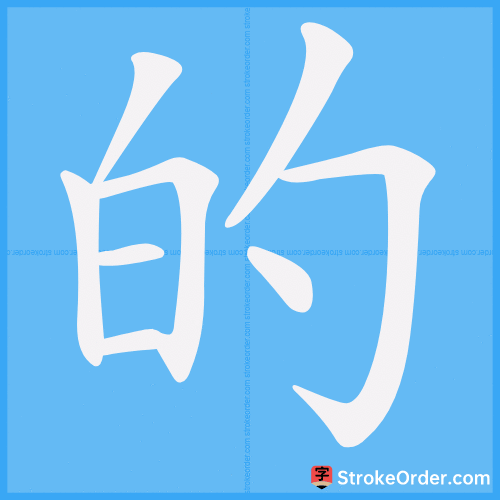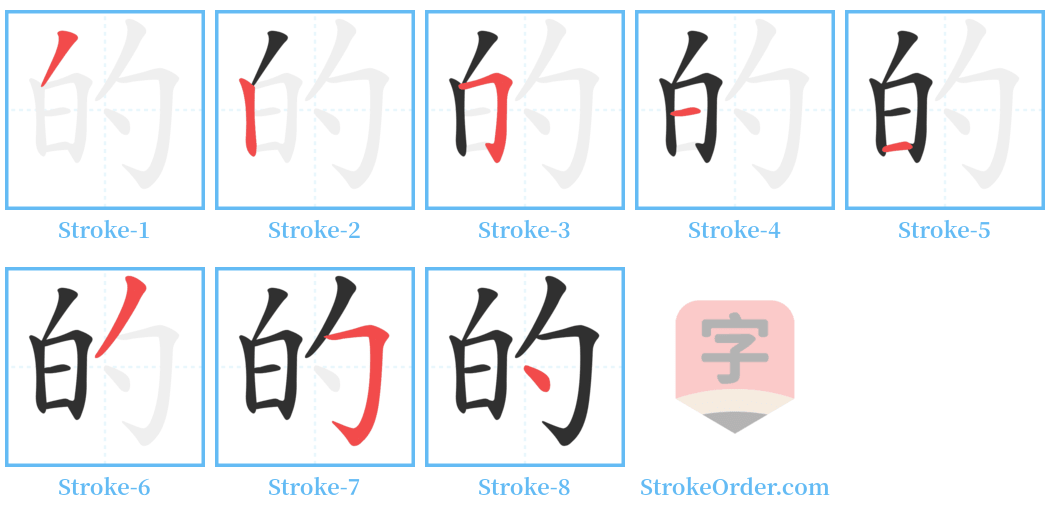的 Stroke Order
Animated Stroke Order of 的

Stroke Order Diagrams for 的

Step-by-Step Handwriting Guide for 的

Learn to Write Chinese Characters with Video Tutorials
Watch the video of writing the Chinese character "的", learn the correct stroke order (笔顺) of the character "的", and master the standard way of writing the character "的".
Free Printable Handwriting Practice with Stroke Order: 的
Printable Writing Practice Worksheet of "的" in Portrait Orientation (Tian Zi Ge)

Printable Writing Practice Worksheet of "的" in Landscape Orientation (Tian Zi Ge)

Information of 的
Pinyin
de、 dì、 dí、 dī
Radical
白
Strokes
8 strokes
Usage
★★★★★
Definition
(possessive particle) / of, really and truly, aim / clear
的
1. 真实,实在。
(1) Real; indeed.
(2) E.g., 的确 (dí què). 的当 (dàng). 的情. 的真. 的证.
2. 确实;实在
([En.] really; indeed)
E.g., 秦观《淮海集》:不因霜叶辞林去,的当山翁未觉秋。
E.g., 又如: 的对; 的据 (真凭实据); 的觉 (果然; 的确); 的是 (的确是).
3. 必定;一定
([En.] certainly)
E.g., 的决 (处决; 处斩); 的的 (特意).
4. 箭靶的中心。
(1) Centre of target for archery.
E.g., 中(zhòng)~. 有~放矢. 众矢之~. 目~ (要达到的目标、境地).
5. 用在词或词组后表明形容词性。
(1) Used after words or phrases to indicate adjectival quality.
E.g., 美丽~.
6. 代替所指的人或物。
(1) Replace the indicated person or thing.
E.g., 唱歌~.
7. 表示所属的关系的词。
(1) A word indicating possessive relationship.
E.g., 他~衣服.
8. 助词,用在句末,表示肯定的语气,常与“是”相应。
(1) A particle used at the end of a sentence to indicate an affirmative tone, often corresponding to "是".
E.g., 这句话是很对~.
9. 副词尾,同“地2”。
(1) Adverbial suffix; the same as "地2".
10. (外)“的士”(出租车)的省称。
(1) (Foreign) abbreviation for "的士" (taxi).
E.g., 打的. 的哥 (referring to male taxi drivers).
---
的 ([dí]) can denote several meanings, including affirmations, possessive constructions, or references to clarity and precision, while also appearing across various contexts, both formally and in casual speech.